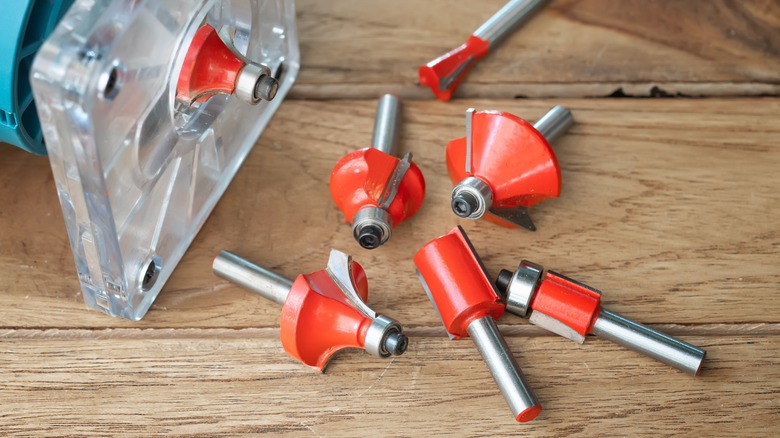The Best Method For Sharpening Router Bits
We may receive a commission on purchases made from links.
Many enthusiasts who go beyond the basic tools to start woodworking at home will soon add a router. With a collection of router bits, these tools can create a huge variety of decorative moldings and complex joints.
Of course, like any cutting tool, router bits eventually become blunt. At first glance, the fancy profiles make sharpening them look intimidating. However, the best method for sharpening router bits is actually surprisingly straightforward. Despite the sometimes complicated outline, the part of the router bit that needs to be sharpened is actually flat. A few minutes work with the appropriate sharpening stone, and the job is done.
There are a couple of important steps before you start to sharpen. First, if the router has a bearing guide, this should be removed with an Allen wrench. Next, the router bit needs to be cleaned of any dirt or resin that has gummed up the edge. You can buy a specialist router bit cleaner, but mineral spirits and a toothbrush should do the job.
Key details for a sharp edge, plus tips for router bit care
Although some router bits are made of High-Speed Steel (HSS), most are either Tungsten Carbide Tipped (TCT) or solid carbide. To sharpen them, you need the type of diamond stone often used for quick and easy chisel sharpening. A convenient option ideal for router bits is a double-sided stone available at Amazon for around thirty-five dollars. These are also great for sharpening garden shears and other blades, instead of a whetstone or file.
It's possible to sharpen router bits with the diamond stone in your hand, but clamping it to a bench gives a more stable platform. You can then focus on keeping the router bit perfectly flat against the stone, creating a keener edge. Give each bit a half-dozen slow, steady strokes against the side with the coarse grit, then turn it over and repeat on the fine grit. If you sharpen your bits regularly, that's all it takes.
Cleaning router bits frequently is a good idea, whether they are blunt or not. A dirty surface causes excess friction that reduces cutting efficiency and could burn the wood. It will help preserve the cutting edge if you keep router bits in proper storage rather than leaving them on the bench or loose in a toolbox where they will get knocked and chipped. If you no longer have the box they came in, you could make a custom rack as your next woodworking project.

